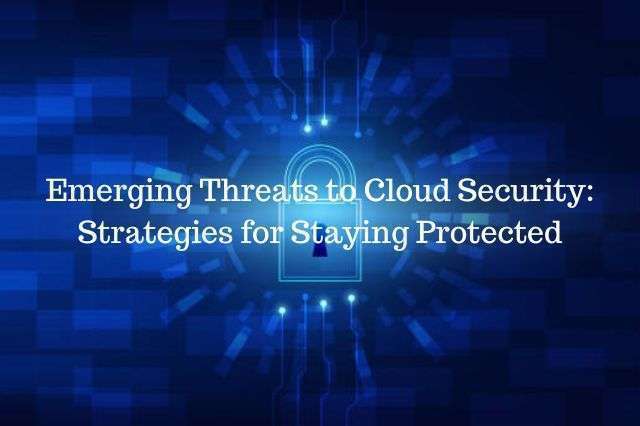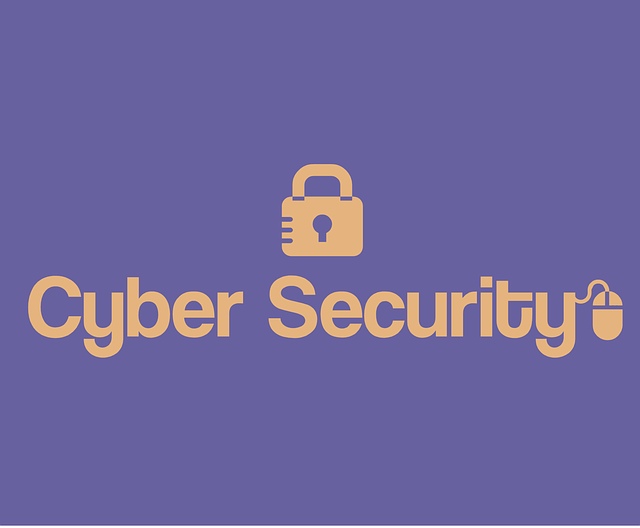Emerging Threats to Cloud Security: Strategies for Staying Protected
In today’s digital age, businesses and individuals are increasingly relying on cloud computing to store, access, and manage their data. Cloud services offer convenience, scalability, and cost-efficiency, making them an essential component of modern-day technology infrastructure. However, this growing dependence on cloud services also brings forth a new set of challenges and risks, particularly related to cloud security.
What is Cloud Security?
Cloud security refers to the set of practices, technologies, and policies designed to protect data, applications, and infrastructure within a cloud environment from unauthorized access, data breaches, and other cyber threats.
Importance of Cloud Security
The security of cloud services is crucial due to the following reasons:
1. Data Protection
Cloud storage often contains sensitive and confidential information, making it a prime target for cybercriminals. Robust security measures, such as encryption and access controls, are vital to safeguarding this data.
2. Business Continuity
A security breach in the cloud can lead to downtime, disrupting business operations and causing financial losses. Ensuring the continuity of operations is contingent upon maintaining a secure cloud environment.
3. Compliance and Regulations
Many industries have strict data protection regulations that organizations must adhere to when using cloud services. Failure to comply with these regulations can result in severe legal consequences.
Current State of Cloud Security
Before diving into emerging threats, it’s essential to understand the existing challenges faced by cloud security. The current state of cloud security encompasses various vulnerabilities and potential points of attack.
Key Threats and Vulnerabilities
Data Breaches: Unauthorized access to sensitive data stored in the cloud can lead to data breaches and compromise customer information. Organizations must prioritize data protection to avoid such incidents.
Insufficient Access Controls: Weak access controls can allow unauthorized users to gain access to critical resources. Implementing multi-factor authentication and stringent access policies is crucial.
Insecure APIs: Application Programming Interfaces (APIs) are potential entry points for attackers to manipulate cloud services. Regularly updating and securing APIs is essential.
Denial of Service (DoS) Attacks: Cybercriminals may attempt to overload cloud servers, causing service disruptions. Robust DoS protection mechanisms are necessary to counter such attacks.
Real-world Examples of Cloud Security Breaches
Capital One (2019): A hacker gained access to Capital One’s cloud storage and stole personal information from over 100 million customers. This incident highlighted the need for better cloud security practices.
Dropbox (2012): Due to a misconfiguration, Dropbox accounts were accessible without passwords for a brief period, exposing user data to potential threats.
Emerging Threats to Cloud Security
As technology evolves, so do the tactics used by cybercriminals to exploit vulnerabilities. The following are some emerging threats to cloud security:
1. Data Breaches and Data Loss
Data breaches remain a significant concern for cloud users. Cybercriminals employ various techniques, such as phishing and malware attacks, to gain unauthorized access to cloud accounts. Organizations must implement robust security measures to safeguard against data breaches, including multi-factor authentication and encryption.
2. Insider Threats and Human Error
Insider threats pose a severe risk to cloud security. Employees with access to sensitive data may accidentally or intentionally leak information. It’s crucial for businesses to conduct regular security training and establish clear data usage policies.
3. Advanced Persistent Threats (APTs)
APTs are highly sophisticated and stealthy cyberattacks that target specific entities over extended periods, making them difficult to detect. These threats often involve multiple stages and use various attack vectors, such as malware, social engineering, or zero-day exploits. APTs can compromise cloud infrastructure, exfiltrate sensitive information, or even disrupt cloud-based services. To counter APTs, businesses must adopt multi-layered security approaches that include threat intelligence, behavior analytics, and network segmentation.
4. Cloud Misconfigurations
Misconfigurations in cloud settings can expose sensitive data to the public internet. Regular audits and adherence to security best practices can help prevent such mishaps.
5. Supply Chain Attacks
Attackers may target third-party vendors and suppliers to gain access to the main organization’s cloud infrastructure. Establishing strict security standards for vendors and conducting thorough vetting processes can mitigate this risk.
Strategies for Staying Protected
To safeguard cloud environments from emerging threats, organizations can adopt the following strategies:
1. Strong Authentication and Access Controls
Implement multi-factor authentication (MFA) to ensure only authorized users can access cloud resources. Regularly review access privileges to prevent unauthorized access.
2. Data Encryption and Tokenization
Encrypt data both in transit and at rest to ensure that even if attackers gain access to the data, it remains unintelligible. Tokenization can also be used to replace sensitive data with non-sensitive placeholders.
3. Regular Security Audits and Penetration Testing
Conduct periodic security audits and penetration testing to identify and address vulnerabilities before malicious actors can exploit them.
4. Employee Training and Awareness Programs
Educate employees about the importance of cloud security and the potential risks associated with their actions. Awareness programs can significantly reduce the likelihood of insider threats.
5. Partnering with Trusted Cloud Service Providers
Choose cloud service providers that have a proven track record of robust security measures and compliance with industry standards.
The Role of Artificial Intelligence in Cloud Security
Artificial Intelligence (AI) plays a crucial role in enhancing cloud security capabilities.
- AI-Powered Threat Detection and Prevention
AI can analyze massive amounts of data in real-time, identifying patterns and anomalies that human analysts might miss. This enables early detection and mitigation of potential threats.
- Automated Incident Response
AI-driven incident response systems can react swiftly to security breaches, minimizing the impact and reducing response time.
The Future of Cloud Security
Cloud security is an ever-evolving field. As technology advances, new threats will emerge. Organizations must remain vigilant and proactive in their approach to cloud security.
Continuous Evolution of Threat Landscape
As cybercriminals find innovative ways to exploit vulnerabilities, security measures must adapt to keep pace with the evolving threat landscape.
Importance of Proactive Measures
Instead of merely reacting to threats, businesses need to adopt a proactive approach by continuously monitoring and enhancing their cloud security infrastructure.
1. Data Breaches and Unauthorized Access:
Data breaches remain one of the most significant and ever-evolving threats to cloud security. Hackers relentlessly target cloud systems, seeking to gain unauthorized access to valuable data stored within. Whether due to weak passwords, misconfigurations, or unpatched vulnerabilities, attackers exploit any weaknesses they can find. The implications of data breaches extend beyond financial losses to reputational damage and legal ramifications. To combat this threat, organizations must prioritize robust authentication measures, encryption protocols, and regular security audits to identify and address potential vulnerabilities promptly.
2. Insider Threats:
Insider threats pose a unique challenge to cloud security. While cloud providers usually have sophisticated security measures, they cannot always control the actions of their own employees or those of the businesses using their services. Disgruntled employees, negligent staff, or accidental data exposure can all lead to severe data breaches. Organizations must implement access controls, monitor user activities, and foster a culture of security awareness to mitigate this threat effectively.
3. Cloud Service Provider Vulnerabilities:
Cloud service providers themselves can become targets for attackers. Cybercriminals may exploit security gaps in their systems or infrastructure to gain access to multiple customers’ data simultaneously. While reputable cloud providers invest heavily in security measures, it is crucial for businesses to thoroughly vet potential providers, understand their security protocols, and establish clear responsibilities through well-defined Service Level Agreements (SLAs).
4. Zero-Day Vulnerabilities:
Zero-day vulnerabilities are undiscovered and unpatched weaknesses in software or hardware, making them highly sought-after by attackers. Cloud services may fall victim.
Best Practices for Cloud Security
Every fortress needs its walls, and in the cloud, best practices serve as the protective bulwark. This section will delve into the practical steps individuals and organizations can take to enhance their cloud security posture. From multi-factor authentication to regular data backups and real-time monitoring, we’ll cover a wide range of proven techniques to fortify the cloud against potential adversaries.
Compliance and Regulations in the Cloud
For businesses operating in sensitive industries or handling confidential data, compliance with industry-specific regulations is paramount. Here, we’ll navigate the complex world of cloud compliance, discussing standards like GDPR, HIPAA, and SOC 2. We’ll explore how to align cloud security practices with these requirements and avoid potential legal pitfalls.
Cloud Security Tools and Solutions
The cloud security landscape is vast, and there are numerous tools and solutions available to help secure your cloud infrastructure. You can take advantage of some of the most popular and effective security tools, from cloud-native options to third-party offerings. Cloud security platforms, identity and access management (IAM) solutions, or encryption services will do you good.
Cloud Security Trends and Future Insights
As technology evolves, so do security threats and solutions. Companies must install Artificial Intelligence (AI)-powered threat detectors, learn and implement blockchain in cloud security, and understand the important role of DevSecOps in keeping safe for future security challenges.
Conclusion
Securing the cloud is a shared responsibility, and with knowledge as our shield, we can confidently navigate the virtual skies. From understanding the fundamentals to adopting best practices and embracing cutting-edge solutions, we can protect our data and harness the true power of cloud computing securely. So, join us as we embark on this thrilling adventure into the world of cloud security and emerge as stalwart guardians of our digital realm.






